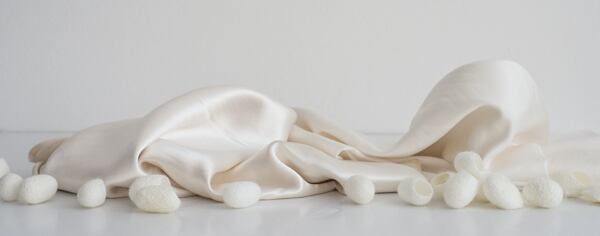
What is real silk?
Let’s get it clear at the outset that this article focuses exclusively on natural silk. You may occasionally (at other online shops) run into synthetic materials mislabeled as “silk” or “silky.” It’s a nuisance that none of us can do much about aside from arming ourselves with a little knowledge up front.
So, what is natural silk? The dictionary definition of natural silk is simple: Silk is a fine, strong, soft, lustrous fiber produced by silkworms, particularly mulberry silkworms, in making cocoons and collected to make thread and fabric.
Our own definition is just as simple: Silk is a wonderful, beautiful, unique material that deserves a place in every wardrobe. No matter what anyone says, no synthetic material can reproduce the qualities of natural silk.


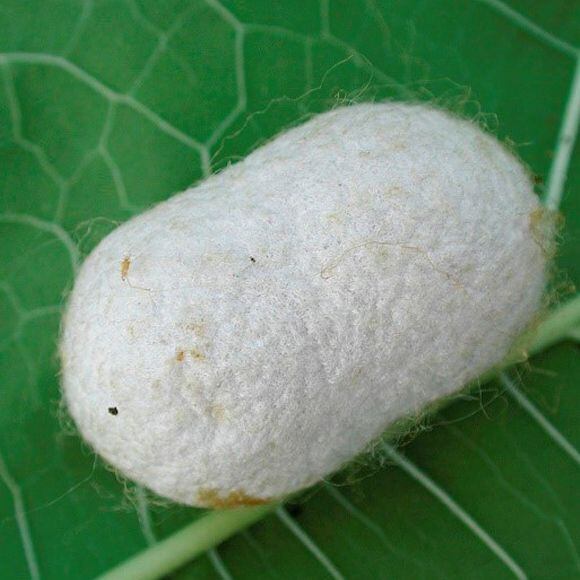
Natural silk is secreted by the glands of silkworms, particularly the mulberry silkworm, who spin the cocoon from which silk fiber is collected.
The story of silk goes back a very long time. Thousands of years ago, it was the exclusive domain of the Chinese imperial court. From there it went on to become a rare and exotic import that only the very wealthy could afford. Today’s silk is certainly less costly than it once was and it’s no longer the case that silk fabrics are a delicate luxury not to be squandered on everyday clothing. Silk comes in a number of varieties and finds its way into anything from fancy ballgowns to casual separates.
Top-selling silk fabrics
What makes pure silk so wonderful?
The wonderful qualities of real silk far outweigh its few drawbacks. What are they?
We could probably start by praising silk’s softness and breathability, but to be honest, we love it for its sheer beauty. Silk fibers have a perfectly smooth surface. If you were to cut one, the cross-section would look like a rounded triangle. That’s where silk’s unique luster comes from. No other material is like it. Equally extraordinary is the elegant drape of fine silk fabrics (chiffon, crêpe de Chine, satin) and the wonderful, papery folds of silk taffeta, dupioni, or duchesse satin. What’s more, real silk takes dyes extremely well and you’d be hard pressed to find anything that surpasses the brilliant hues of dupioni and habotai.
Practical factors are certainly also important. As we mentioned above, silk is soft – one can barely feel it against the body. It is fine, smooth, and kind to the most sensitive skin. Even “rougher” weaves like georgette or spun silk are extremely pleasing to the touch.
Silk breathes (yes, even thicker silks like duchesse) and this gives it a cooling effect. This is doubly true of fabrics like crêpe de Chine and silk satin or silk charmeuse. Softer materials that don’t have such a smooth surface (silk jersey, silk blends, wild silk, spun silk) tend to feel a shade warmer.
Like other natural materials, silk neutralizes odors rather than trapping them. If you exercise regularly, you know that you have to throw your workout stuff into the washer right away. While we don’t recommend silk for your daily workout, you’re sure to appreciate its odor resistant quality in blouses, ballgowns, and silk lingerie.
Silk doesn’t get moldy like cotton and moths don’t nibble holes in it like wool. Just be sure that it doesn’t lie folded in your closet for too long, or you may find yourself with creases that can’t be ironed out. This especially applies to garments that you don’t wear often (evening gowns) and fabric that’s waiting in your sewing room to be made into something lovely.
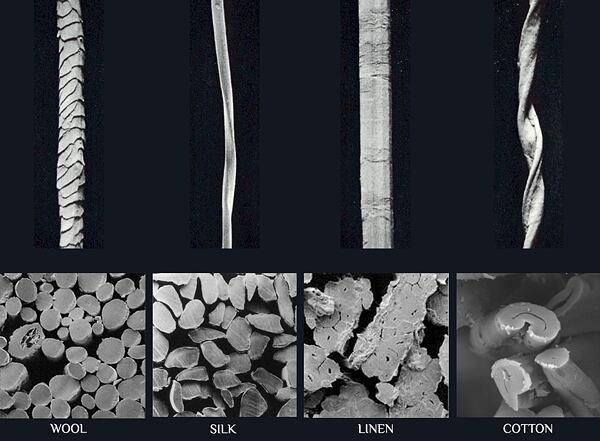
Silk is sensitive to high temperatures, so you should follow care instructions when washing and ironing (lukewarm water, a cooler iron). And be careful, some of the most exclusive silk fabrics (duchesse satin, taffeta) shouldn’t be allowed to get wet at all.
For more tips, see our article on how to care for silk.
One of silk’s admitted downsides is that it tends to wrinkle, a quality typical of natural materials. Of course, not all silks are especially prone to wrinkling and some hardly wrinkle at all (for example silk elastane blends). Find out more about how individual fabrics behave, including wrinkling, in our article on types of silk fabric.
Are all silks created equal?
Yes and no. Natural silk comes in many varieties. When people talk about silk, they’re usually thinking of the most common type, mulberry. But there are many others. All of the natural silks share the wonderful qualities described above. The difference usually lies in appearance, luster, origin, production process, and price. For a good overview, check out our post on Types of silk.
How is natural silk different from synthetic imitations?
Here at Sartor all of our silks are made of real, natural silk fiber. Unfortunately, the same doesn’t always apply in other shops. Sometimes that’s due to ignorance or a confusion in terms but sometimes it’s just plain underhandedness.
What is artificial silk? The term “silk” in theory can be applied to any “endless” fiber referred to as filament. Mulberry silk is the only natural material that falls into this category (of course it’s not actually endless, just awfully long). Then there are the synthetic filaments. Polyester or viscose silks are long, smooth, artificially manufactured filaments meant for production of imitation silk fabrics.
At some other shops, you might run into fabrics labeled as “silk” that are actually composed of polyester or rayon. This doesn’t necessarily have to be a conscious attempt to defraud customers; it may be just plain ignorance. According to current textile labeling laws (in Europe this is Regulation (EU) No 1007/2011) the word “silk” can only be used to indicate fibers obtained exclusively from silk-secreting insects – in other words real, natural silk. If you have doubts about the content of a fabric, ask before you buy, or test a sample yourself.
Exercise caution when buying fabric from sources outside of the EU. Textile regulations elsewhere may not be the same and “silk” might be used more loosely. If it doesn’t say “100% natural silk” it may very well be a synthetic.
Distinguishing real silk from artificial silk is actually easier than you may think. Check out our post on how to tell real silk.
How is natural silk made?
Silk production is a complex and time-consuming process. Silkworms and cocoons require constant care and attention and processing cocoons into thread is a demanding task.
It’s also a fascinating process, and one that we have undertaken to document for you step by step. Join us on our visit to a silk reeling mill, for example, to see how the ultra-fine cocoon fibers are transformed into exquisite, glossy threads.
By the way, did you know that silk cocoons are bought and sold on special trading floors, their prices rising and falling just like stocks on Wall Street? In India these markets are the only legal channel for trading in silk cocoons. The market takes the form of a live auction and can be quite a nail-biter. Curious? Check out our report from a cocoon market.
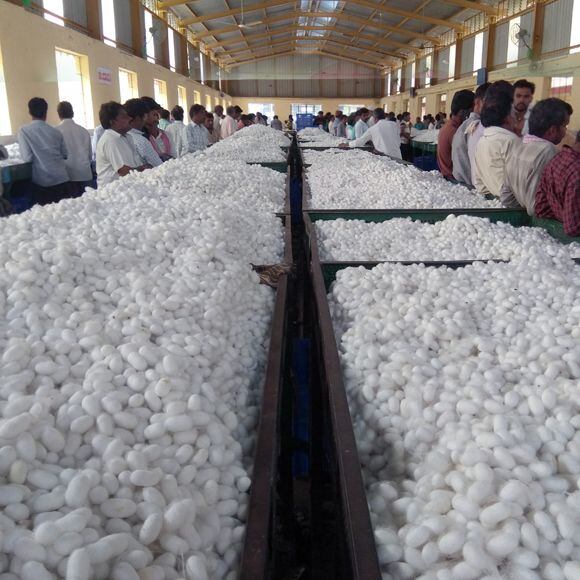
The fascinating history of silk
According ancient legend, silk was discovered by the Chinese princess Hsi Ling Shih who lived around 3000 BCE. She was sitting in her palace garden enjoying a cup of tea one day, when a cocoon fell into her cup. The lady wanted to fish it out, but the cocoon started to unravel into a very fine thread. She immediately understood the potential of her discovery and began to study the life of the silk moth, ultimately becoming the founder of Chinese sericulture.
We’ll never know if there’s any truth to that story, but archeologists have found remnants of processed cocoons, fragments of cloth, and the remains of a weaving loom from a period between 4000 and 3000 BCE. The Chinese guarded the secret of silk production for a very long time, but, still in ancient times, it ultimately leaked to Japan, Korea, and India. Silk was later imported to Europe, Africa, and western Asia as a luxury good – first in a trickle and later in greater volume on the Silk Road. The route led from the Chinese city of Xi’an all the way across Asia to the Mediterranean. The journey took about a year, with caravans conveying not only silk but also perfumes, spices, tea, and porcelain. From Rome, they carried back gold, glasswork, and wine. The Silk Road was vital to the cultural development of the areas through which it passed because aside from goods it carried religious and philosophical ideas as well as scientific knowledge in a number of fields. Sometimes the Silk Road also brought disease, like the dreaded bubonic plague, but that’s another story.

There was one thing the caravans were forbidden from carrying off… the secret of how silk is made. China meant business about keeping its monopoly (Europeans were willing to lay out exorbitant sums in gold for their silks) and the export of silkworms or their eggs was strictly forbidden on pain of death. The first to lay hands on the coveted silkworm was the Byzantine emperor Justinian I, who dispatched a couple of monks to smuggle some out. They returned with their contraband in 552 CE and European sericulture was born. It was no great distance from Byzantium to western Europe, northern Africa, and the middle east.
The center of the European silk industry soon settled in Italy, with Lucca, Venice, Florence, and Genoa at its heart. Silk production also flourished in Spain, where looms were kept busy for Muslim rulers in Andalusia and then for Catholic kings in Valencia (which was renowned for its velvet). The silk industry eventually took root in the French city of Lyon, where some original workshops are still in operation today. In the 17th century, a full third of Lyonnais worked in the silk industry. Italian and French silks were of exceptional quality, earning both countries a lasting place in the newly emerging world of high fashion.
The second half of the 19th century brought a blow to the European silk industry, which was decimated by an epidemic that spread among silkworms. This drove up the cost of European silk, which could no longer compete with other products manufactured by its booming textile industries, nor even with imported silks which had been made cheaper by improvements in transport (faster boats, the opening of the Suez Canal).
Several mills in Europe still manufacture luxury silk fabrics today, but the raw material for their production is imported from Asia. The world’s leading producers of silk are now, as in ancient times, China, India and, to a lesser extent, Japan.
Pure silk in every wardrobe
An absolute classic with a rich history, silk deserves a place in your wardrobe. Silk is a perfect example of slow fashion – it offers quality, beauty, and comfort and it definitely won’t languish, unworn, in the back of your closet until you toss it out without ever putting it on. The selection of silk fabrics is so vast, that it finds its way into an array of garments, from sumptuous eveningwear and bridal fashions, to summer tops, lingerie, and nightwear.
Compared to materials like cotton or rayon, silk is truly ecological. Its production requires neither vast amounts of water nor toxic chemicals. What’s more, it calls for an abundance of live trees for silkworms to feed upon, so silk production also means large, healthy, mulberry orchards.
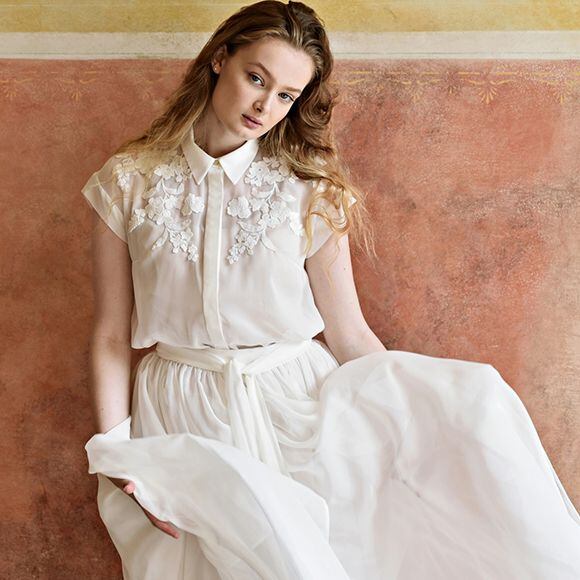
Full-length wedding skirt in natural silk by Lucie Komarkova
Silk fabrics from our collection





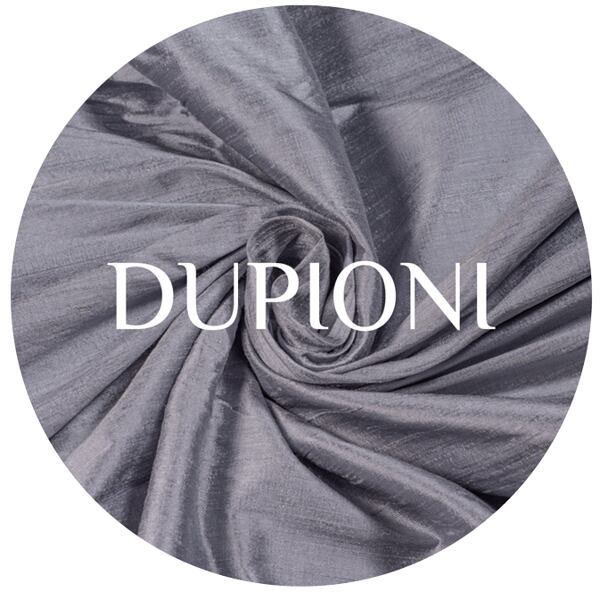

Comments(0)